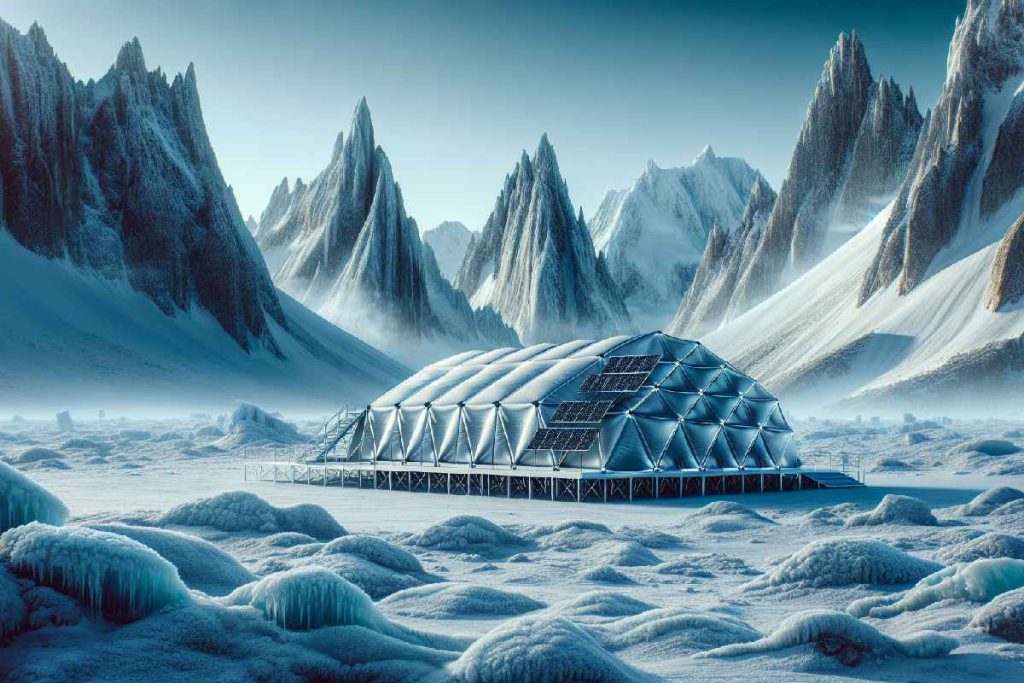Table of Contents
Unlocking The Potential Of Custom Structures In Extreme Environments
Unlocking The Potential Of Custom Structures In Extreme Environments Imagine standing at the edge of an icy expanse in the arctic or in the midst of a sandstorm in the desert. Now, consider conducting day-to-day operations in these conditions. Tough, right? In the heart of these extreme settings, there’s a silent revolution going on, improving not just the way we work, but also how we live in these remote landscapes. At the core of this change is the innovative use of a follow fabric structure, a game-changer for industries ranging from mining and construction to military operations across the globe.
Navigating The Challenges Of Remote Operations
The flexibility of fabric structures has brought about a remarkable transformation in how businesses operate in remote locations. These structures, engineered to withstand diverse climates, offer a practical solution for industries that need to set up operations quickly and efficiently. For example, in a mining operation located at a high altitude, traditional construction methods are not only costly but also time-consuming. Here’s where fabric buildings come into play, allowing for swift assembly and disassembly, thus reducing the logistical nightmare of transporting construction materials to hard-to-reach places.
In addition to the practical benefits of fabric structures in remote locations, there’s also an environmental angle to consider. These constructions often leave a minimal footprint, making them an attractive option for operations that are sensitive to the ecological balance of their surroundings. Quick to erect and dismantle, they leave the landscape relatively unscathed, allowing nature to recover faster once operations cease. This aspect reflects a growing commitment to sustainable practices within industries that operate in such extreme territories.
Braving Extreme Weather With Confidence
One of the remarkable aspects of these contemporary marvels is their resilience. Designed to endure everything from blistering heat to sub-zero temperatures, fabric structures are the epitome of strength and durability. Their secret lies in the cutting-edge materials and architectural designs, which include features like robust insulation and wind resistance. Such innovations ensure that operations within these shelters can continue undisturbed, irrespective of the weather outside. This resilience not only protects valuable equipment but also provides a safer environment for the workforce.
Customized Solutions For Unique Project Needs
Every project has its own set of challenges and requirements, and the beauty of fabric structures lies in their adaptability. Customized to meet specific operational demands, these buildings can integrate sophisticated technology and infrastructure, providing everything from office space to accommodation. Moreover, their scalability means they can grow with the project, offering a level of flexibility that traditional buildings simply cannot match. This bespoke approach ensures that no matter how unique the project, the right solution is always at hand.
Enhancing Worker Well-Being In Remote Camps
Beyond their functional advantages, advanced camp systems within these fabric structures play a vital role in ensuring the welfare of the workforce. High-quality living conditions, comprehensive medical facilities, and communal areas contribute to a healthier, happier team. This focus on wellness is pivotal, particularly in isolated operations where the morale and productivity of the workforce are directly linked to their living environment. These camps prove that even in the most inhospitable places, it is possible to create a slice of home, fostering a sense of community and well-being.
Conclusion
In conclusion, the use of custom fabric buildings and advanced camp systems is revolutionizing operations in extreme and remote environments. By offering a blend of flexibility, durability, and comfort, they not only address the logistical and operational challenges faced by industries but also significantly improve the quality of life for those working in the field. It’s a testament to human ingenuity, proving that no environment is too tough to tackle with the right approach.
